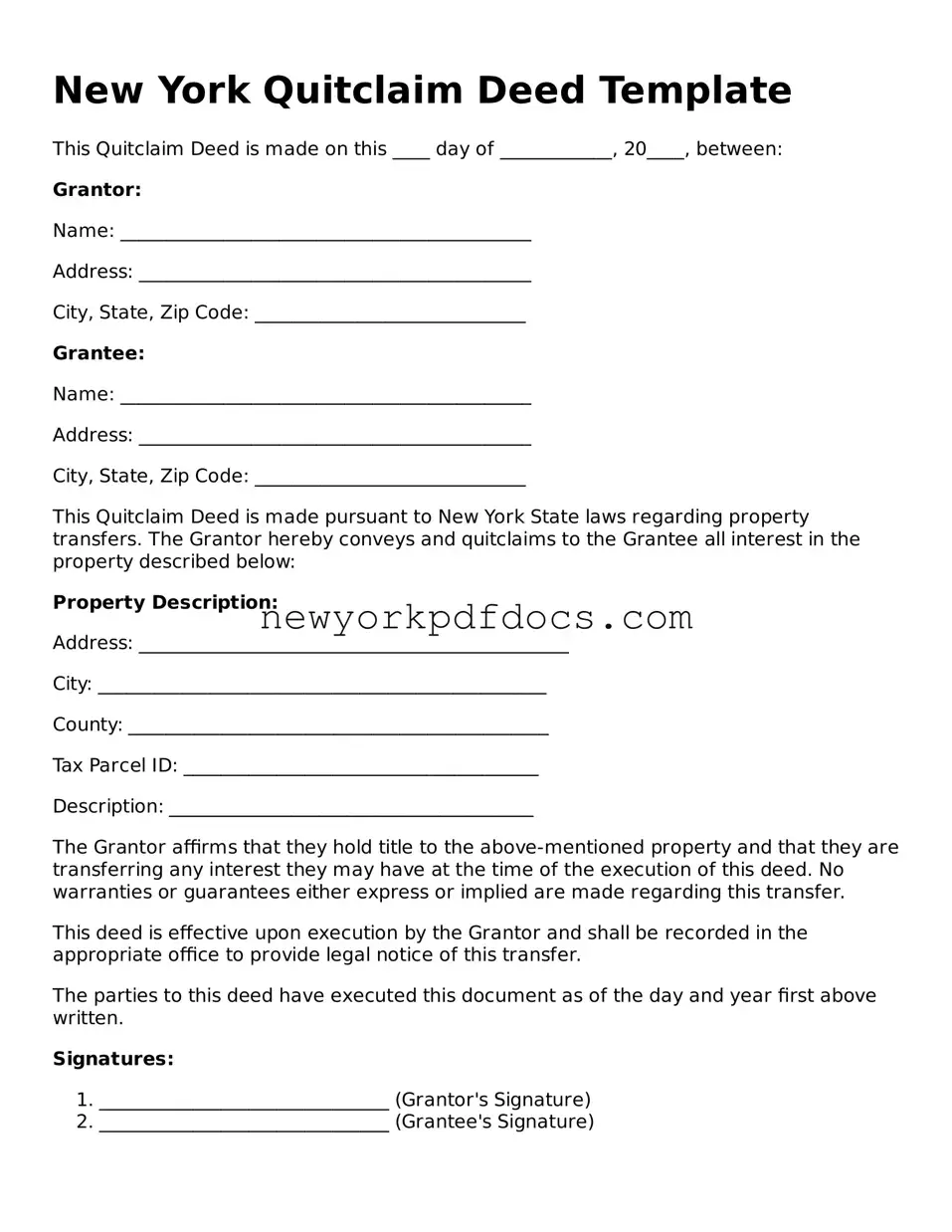New York Quitclaim Deed Template
This Quitclaim Deed is made on this ____ day of ____________, 20____, between:
Grantor:
Name: ____________________________________________
Address: __________________________________________
City, State, Zip Code: _____________________________
Grantee:
Name: ____________________________________________
Address: __________________________________________
City, State, Zip Code: _____________________________
This Quitclaim Deed is made pursuant to New York State laws regarding property transfers. The Grantor hereby conveys and quitclaims to the Grantee all interest in the property described below:
Property Description:
Address: ______________________________________________
City: ________________________________________________
County: _____________________________________________
Tax Parcel ID: ______________________________________
Description: _______________________________________
The Grantor affirms that they hold title to the above-mentioned property and that they are transferring any interest they may have at the time of the execution of this deed. No warranties or guarantees either express or implied are made regarding this transfer.
This deed is effective upon execution by the Grantor and shall be recorded in the appropriate office to provide legal notice of this transfer.
The parties to this deed have executed this document as of the day and year first above written.
Signatures:
- _______________________________ (Grantor's Signature)
- _______________________________ (Grantee's Signature)
IN WITNESS WHEREOF, the undersigned has executed this Quitclaim Deed on the date first above written.
State of New York
County of ______________________
On this ____ day of ____________, 20____, before me, a Notary Public in and for said State, personally appeared ____________________________ (Grantor), known to me to be the person whose name is subscribed to the within instrument, and acknowledged that they executed the same.
Witness my hand and official seal.
__________________________________________
Notary Public
My commission expires: _______________
